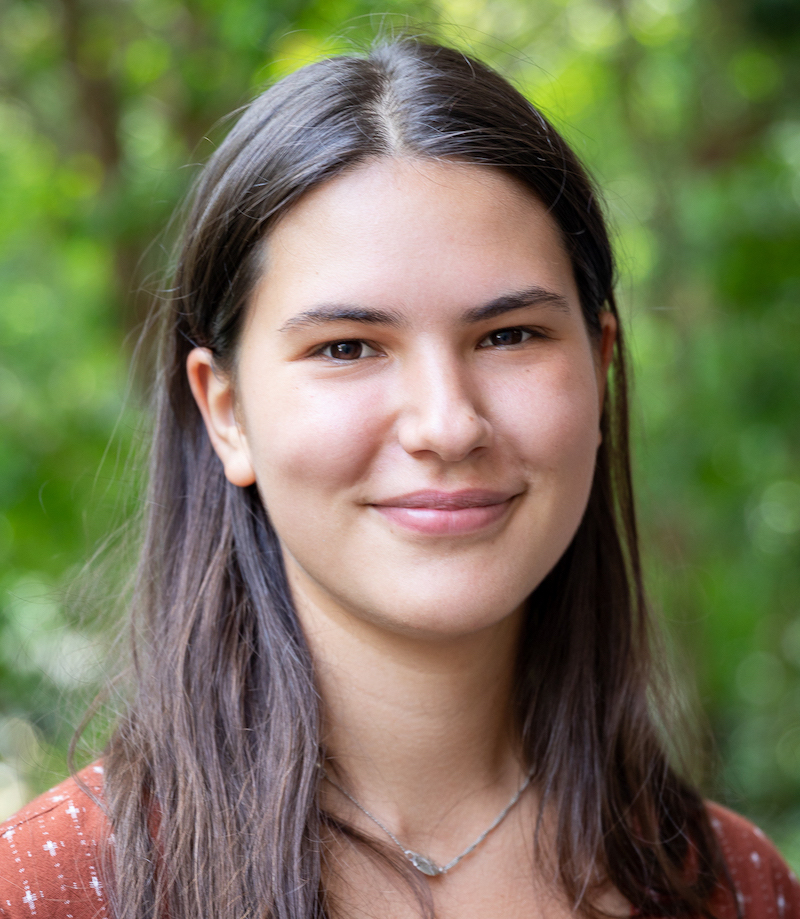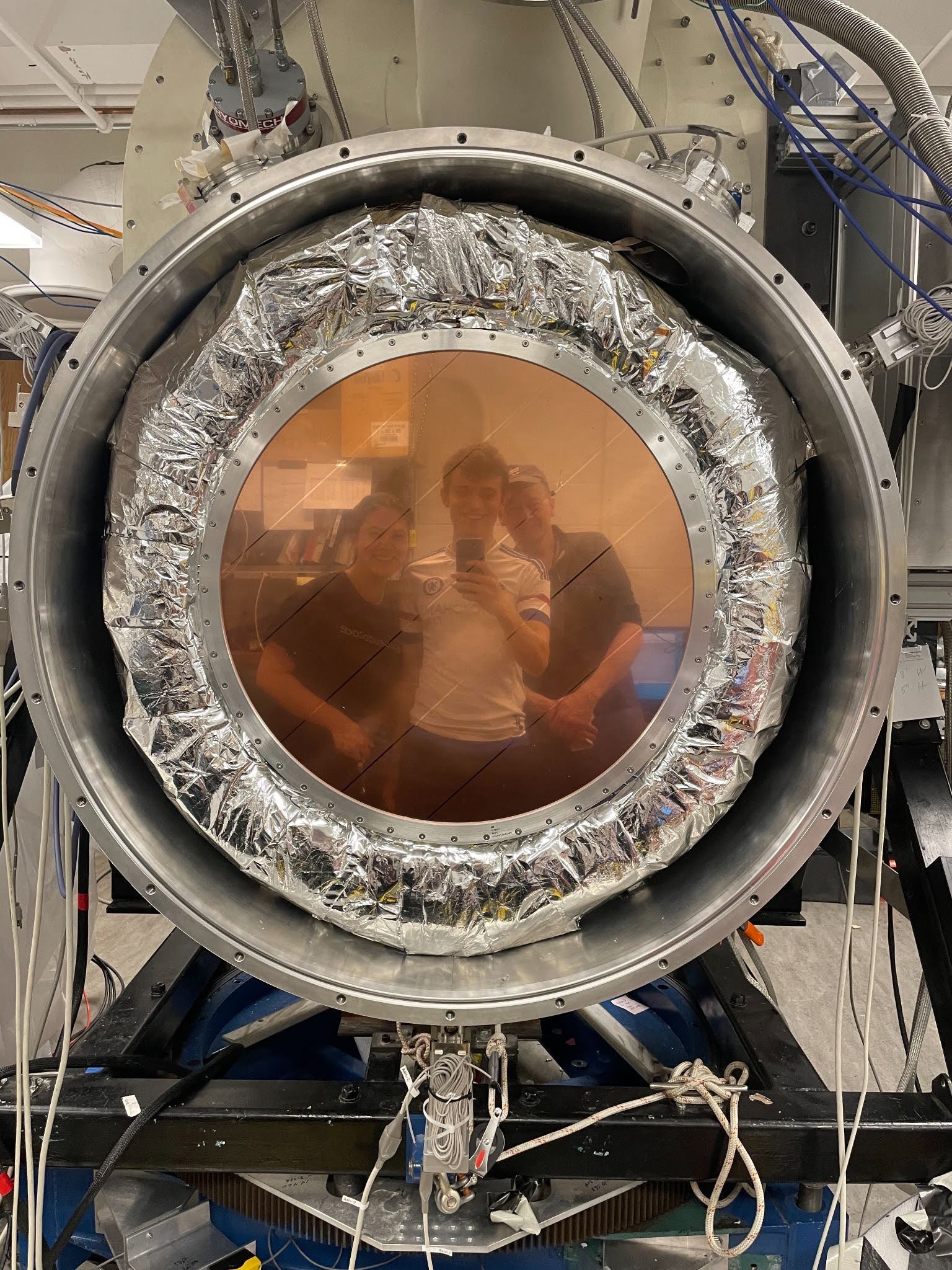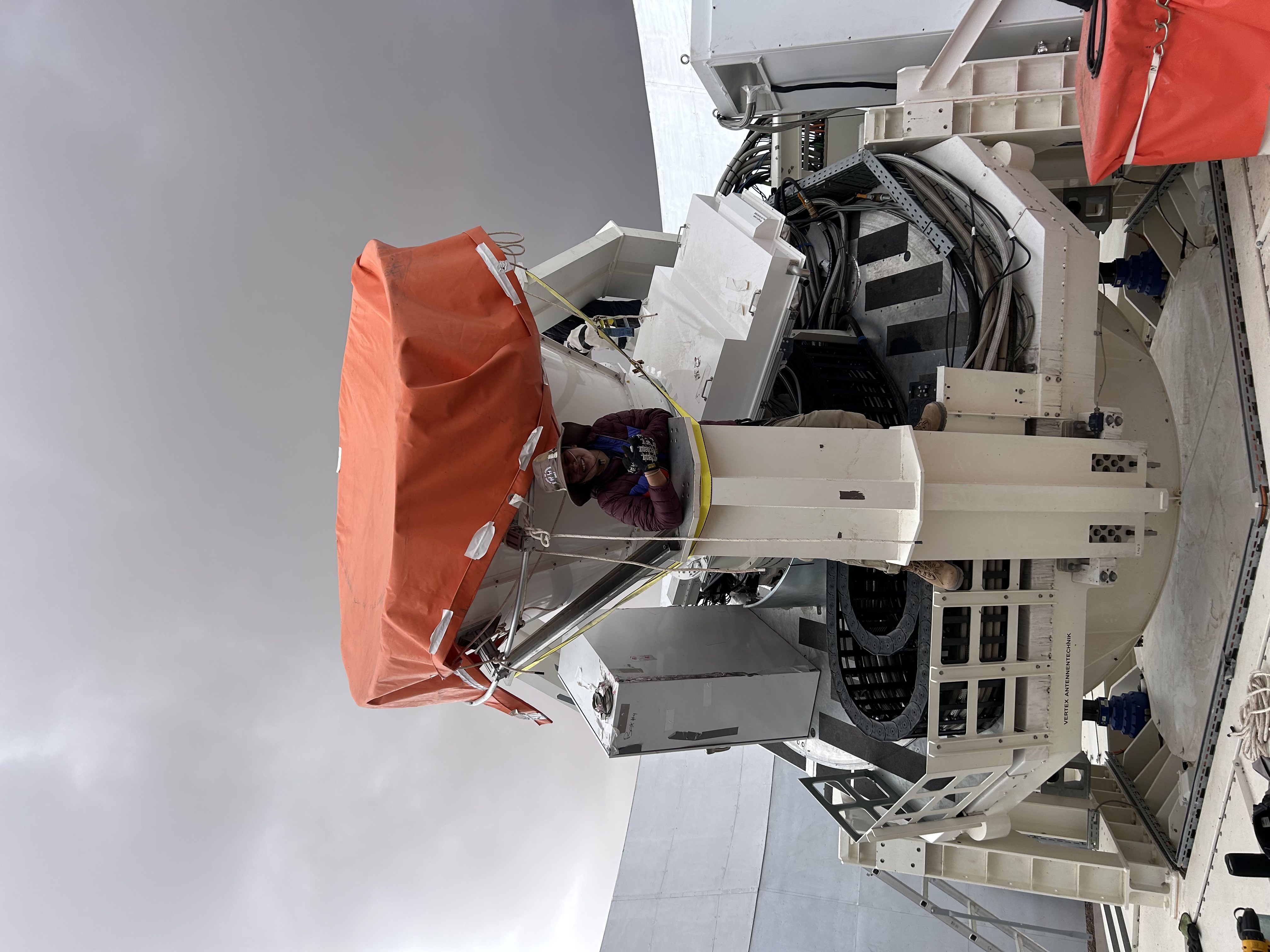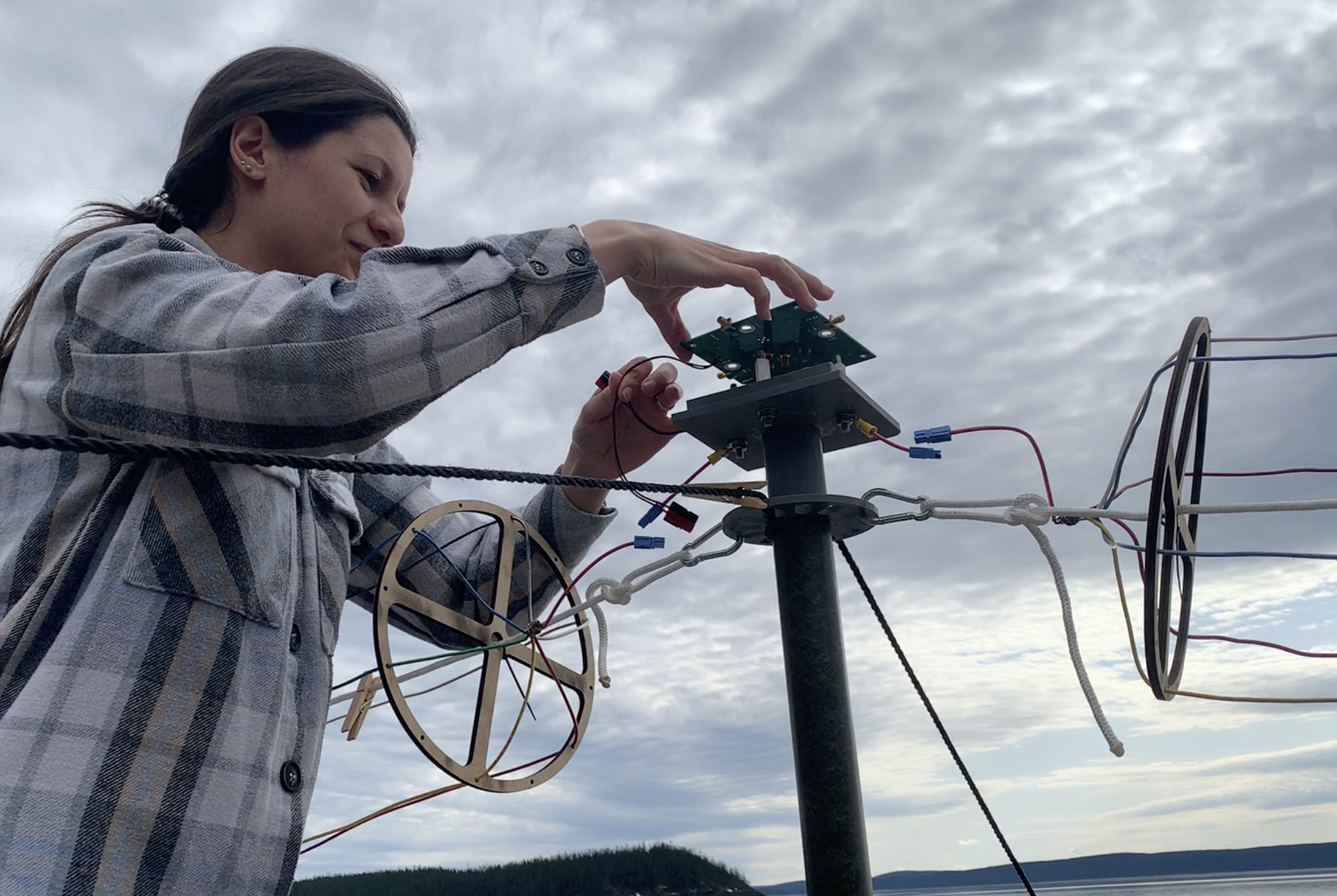Joëlle-Marie Bégin
- PhD candidate at Princeton University
My interests are in cosmology instrumentation and analysis. I am currently working on the Princeton aXion Search (PXS), a new dark matter experiment searching for the axion in the 300-500 MHz frequency range.
See research highlights below, or read about my work in more detail.
-
Publications
- R. Kolevatov, J. Wiedemann, D. Trunin, J. Begin, N. Otto, L. Page, S. Chaudhuri Cryogenics 149, 104079 (2025)
Passive pyrolytic graphite heat switch for sub-Kelvin coolers - K. Yamada, B. Bixler, Y. Sakurai, P. C. Ashton, J. Sugiyama, K. Arnold, J. Begin, et al. Rev. Sci. Instrum. 96, 019901 (2024)
The Simons Observatory: Cryogenic Half Wave Plate Rotation Mechanism for the Small Aperture Telescopes - J. Begin, A. Liu, A. Gorce, Phys. Rev. D 105, 083503 (2022)
Joint constraints on reionization: a framework for combining the global 21cm signal and the kinetic Sunyaev-Zel’dovich effect
Collaboration publications, alphabetical author list
- DM Radio Collaboration. Electromagnetic modeling and science reach of DMRadio-m3 [preprint]
- DM Radio Collaboration. Noise limits for dc SQUID readout of high-Q resonators below 300 MHz [preprint]
- Simons Obervatory Collaboration. The Simons Observatory: Science Goals and Forecasts for the Enhanced Large Aperture Telescope [preprint]
- R. Kolevatov, J. Wiedemann, D. Trunin, J. Begin, N. Otto, L. Page, S. Chaudhuri Cryogenics 149, 104079 (2025)
-
Talks
- APS Global Physics Summit, Cryogenic and magnet design for the Princeton aXion Search, March 2025, [slides]
- Princeton University Gravity Group seminar, "Joint constraints on reionization with the 21 cm signal and kSZ” & “observing the low frequency sky with ALBATROS”, 2023, [slides]
- SAZERAC-GULP 21 cm, Developments on a new low-noise amplifier and antenna for ALBATROS, 2022, [slides][recording]
- Global 21 cm Workshop, Constraining reionization with the 21 cm global signal and kSZ, 2021, [slides] [recording]
- SAZERAC Specialist Session, Constraining reionization with the 21 cm global signal and kSZ, 2021
The Princeton aXion Search
The Princeton aXion Search (PXS) is a novel experiment searching for axions in the 300-500 MHz range, corresponding to axion masses between 0.8 and 2.1 ueV. PXS will consist of a resonating cavity immersed in a 5 T, 800 mm bore, conduction-cooled NbTi magnet. We are developing the NbTi magnet, as well as a 5T 200mm bore Nb3Sn test coil, in collaboration with the Princeton Plasma Physics Laboratory. To detect the weak axion signal, PXS will employ a kinetic inductance travelling wave parametric amplifier (KI-TWPA) in the first stage of amplification; on the right, see Joe Wiedemann working on various components of the RF chain. The PXS band lies in a transitional range for amplifier technology, where DC SQUIDS and JPAs are typically used at lower and higher frequencies respectively. In collaboration with CALTECH JPL, we are developing a TWPA tailored to the PXS frequency range. During my time working for PXS, I have led the design and comissionning of current leads for delivering up to 600 amps down to the first stage (~4K) of a pulse tube cryocooler. These current leads will be used for both the Nb3Sn test coil and the full scale PXS coil. Leftmost picture is me working on the cryostat for the test coil, picture right of it is me working on the model coil (minus magnet wire)! I have also led the design of the PXS cryostat, which will house a dilution refrigerator to cool the cavity (third picture, ft. Nate Otto) to 40 mK, and three pulse tube cryocoolers to cool the magnet to 4 K. The cryostat is currently being built and will be comissioned next year!
The Simons Observatory Small Aperture Telescopes
The Simons Observatory (SO) is a suite of CMB instruments operating from the Atacama desert in Chile. SO consists of a large aperture telescope (LAT), targeting small angular scales, and three small aperture telescopes (SATs). The SATs are designed to measure the B-mode polarization of the CMB at degree angular scales, with the ultimate goal of constraining primordial B-modes and probing the physics of inflation. In aggregate, the three SATs have a total of over 60,000 transition edge sensor (TES) detectors, over 20 times more detectors than were employed in previous generation B-mode experiments. During my first two years at Princeton, I was part of the team working on one of the SATs. In the lab, we tested a number of elements in the optical stack of the telescope. I contributed to the characterization of the mechanical performance and systematic effects of the cryogenically levitating cold half-wave plate (CHWP). The SO CHWP is the first cryogenically levitating HWP to be used in a CMB experiment, and will serve the important role of modulating the polarized sky signal to frequencies above those where atmospheric emission dominates. I led the effort to re-purpose an old telescope platform to rotate the SAT in lab. The Princeton SAT was the only of the three to undergo azumithal scanning tests in the lab, leading to key insights about the CHWP's behaviour during observations! In January of 2024, I participated in the deployment of the SAT to the SO site in Chile. After returning from Chile, I began work on comissioning analysis. Particularly, I made maps of Jupiter to understand the beam of the telescope, and analyzed the response of the SAT's detectors to changes in the precipital wave vapour (PWV) with the goal of improving the detector biasing strategy.
Constraining reionization with the global 21 cm signal and kinetic Sunyaev-Zel'dovich effect
What does it look like when two signals are complementary probes of reionization? In this project, we confirm the intuition that the global 21 cm signal and kinetic Sunyaev-Zeldovich effect (kSZ) are sensitive to different modes of the ionization history. The 21cm signal is expected to be most sensitive to rapidly evolving modes since it is difficult to decouple from spectrally smooth foreground contaminants. On the other hand, the kSZ is more sensitive to extended modes since it is sourced by the patchiness of reionization and integrated through cosmic time. By decomposing simulated covariances in the Karhunen-Loeve eigenvalue basis, we can order modes of reionization according to relative 21cm-kSZ information content (left figure, click to expand). Moreover, we show that combining the two probes leads to improved constraints on the ionization history when compared to individual constraints (right figure), and that working in the KL basis facilitates the detection of systematics and outliers.
Instrumentation for the ALBATROS experiment
In the past century, significant efforts have been made to map the sky at radio frequencies. Although a number of experiments operating below 100 MHz have shed light on the low frequency sky, there is a dearth of observational data below 30 MHz. Measuring the redshifted 21cm line at these frequencies is a promising avenue for probing the “Cosmic Dark Ages”, the epoch of the universe before the first stars and galaxies formed. Before we can measure the cosmological 21cm line at these frequencies, though, we need to understand the foreground contaminants which are orders of magnitude brighter! ALBATROS is an interferometric experiment aiming to produce high-quality maps of the sky below 30 MHz, thus paving the way for measurements of the Dark Ages. During my time working for the collaboration, I worked on the development of the first low-noise amplifier and antenna custom made for ALBATROS. I also designed a housing structure for the experiment's power systems, and took part in three remote deployments to set up the first fully autonomous ALBATROS antenna stations.






